Review of the ceiling plaffle market: design, styles and directions, models, manufacturers, prices, installation technology.
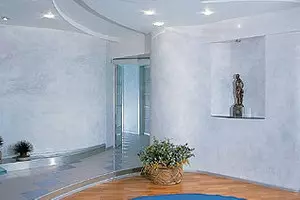
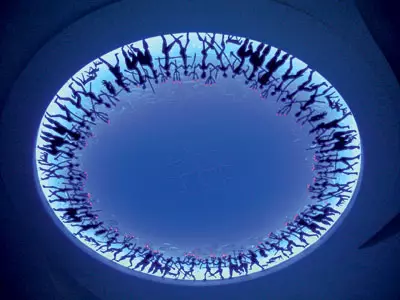
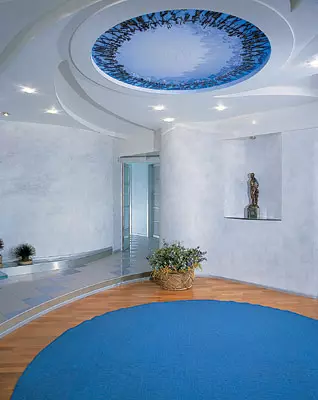
Copyright ceiling "Forming procession" performed by Igor Silay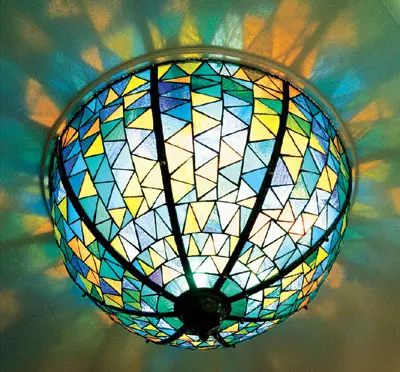
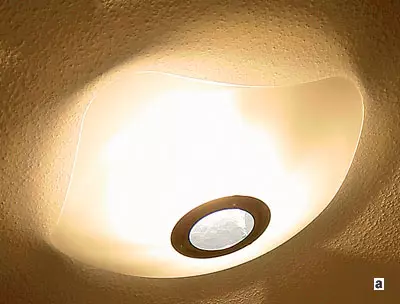
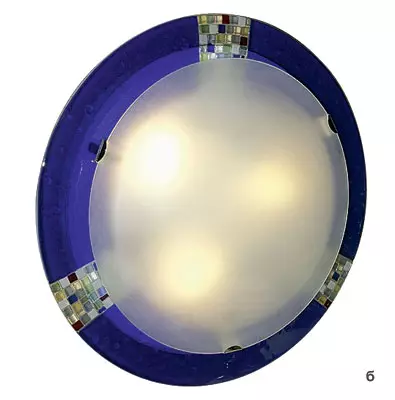
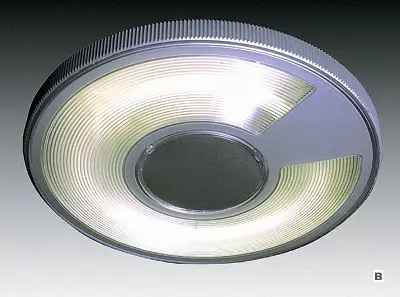
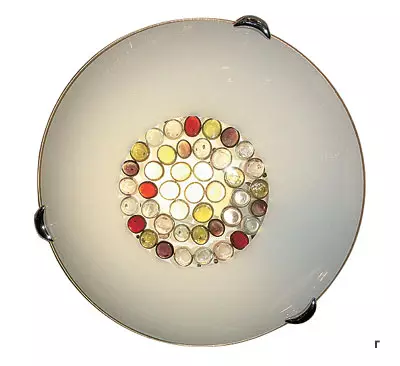
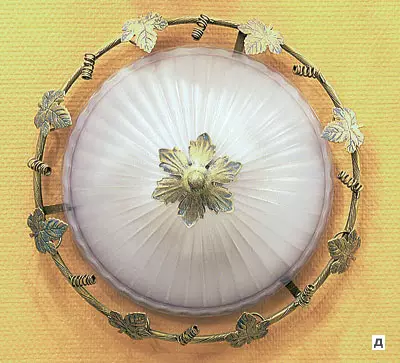
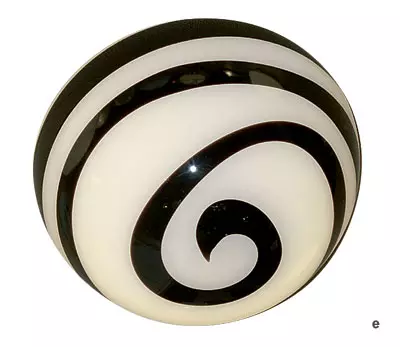
a, b- lgd (italy);
Luceplan (Italy);
G- Kolarz (Austria);
D- Lamp (Italy);
E- Sloveluce (Italy)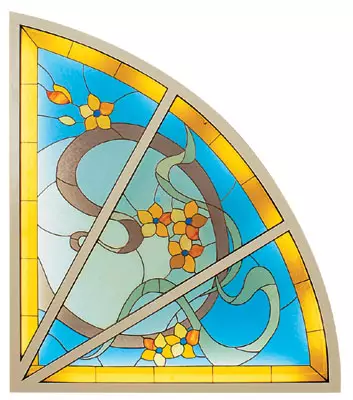
The flashlight does not have to take the lion's share from the ceiling area and become a key interior object. "Air" design with an area of 1-1,5m2, made in neutral light colors, does not take care of too much attention and quite organically fit into the interior of the living room or bedroom
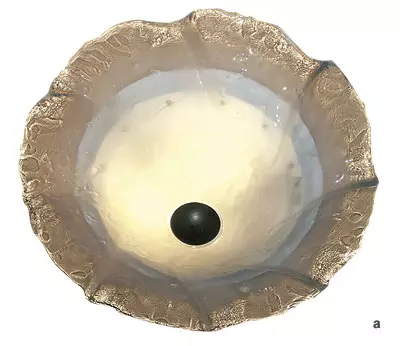
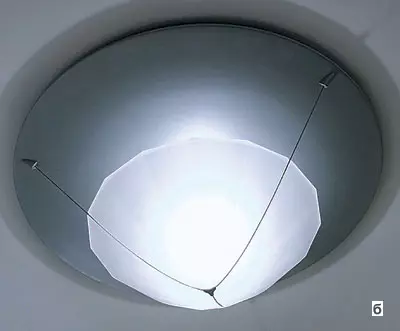
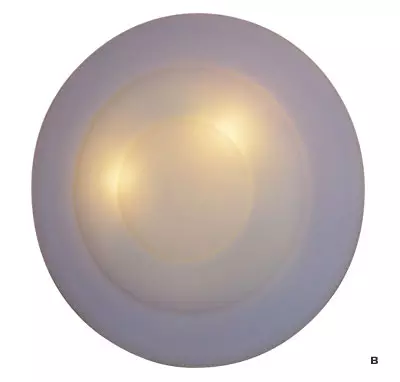
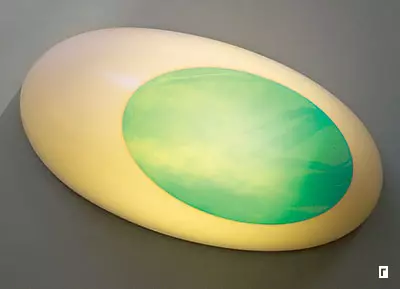
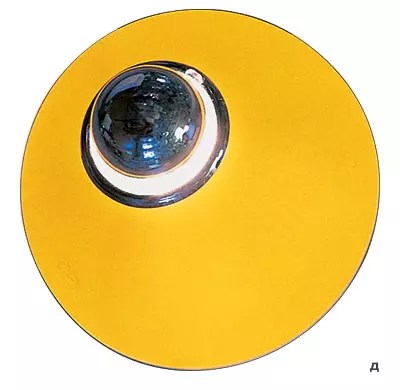
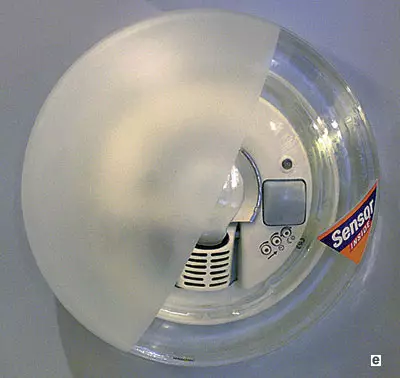
B- Milan (Italy);
Bankamp (Germany);
Goggle lamp, Goggle, is coated with a special film, changing color, depending on the angle of falling light;
D- Copyright (Italy);
E- The model from Steinel has a built-in sensor that responds to the presence of a person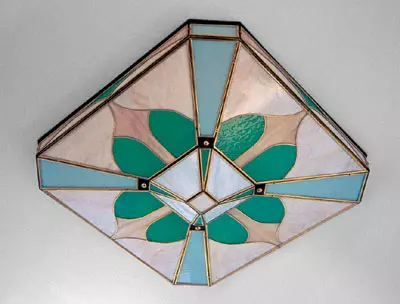
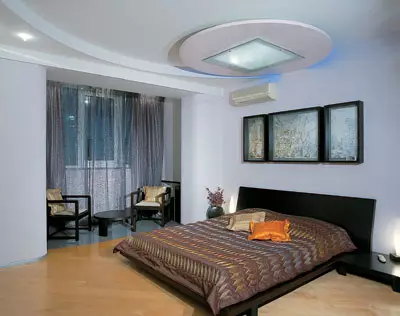
The ceiling of the room can be difficult, have two, three or more levels, but it is advisable to put them on the perimeter of the walls, leaving the center as free as possible. "Laboratory of PC"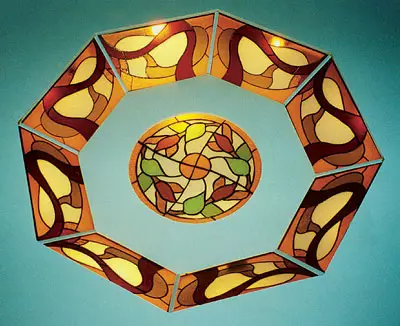
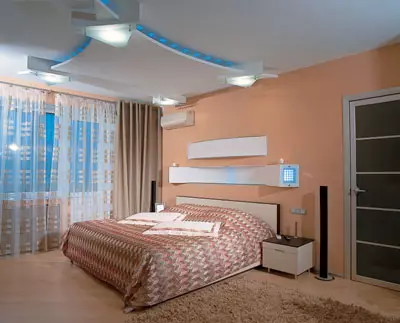
Ceiling structures with a large number of lamps, as a rule, become a visual center of the room. At the same time, losses at the height of the room are minimal and can be 10-15 cm.
"Laboratory of PC"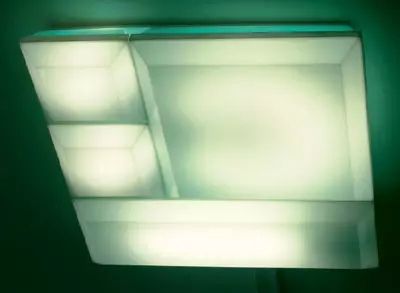
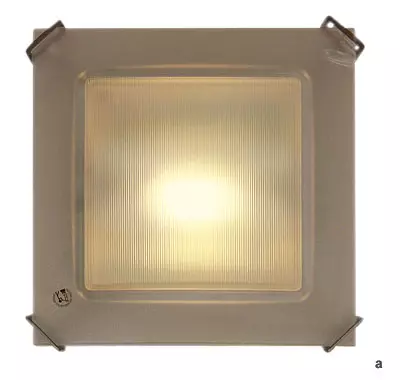
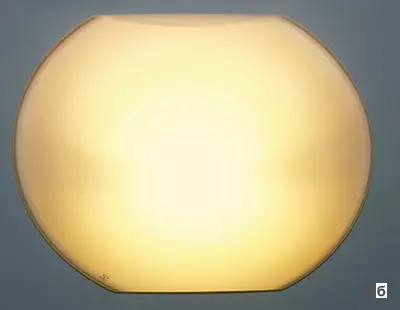
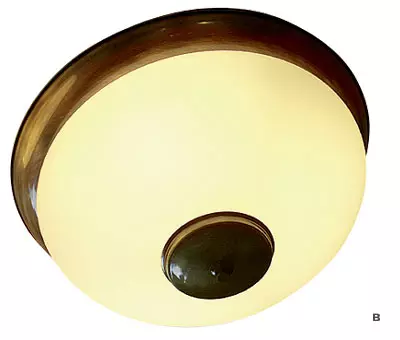
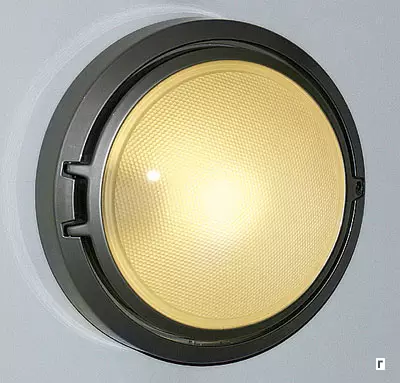
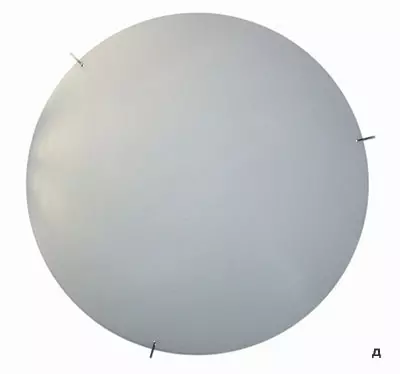
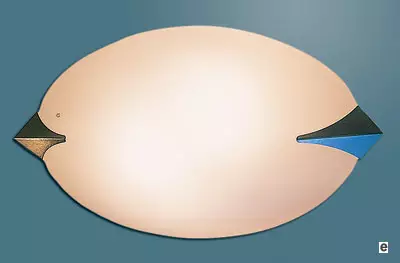
B- Putzler (Germany);
in Kolarz (Austria);
Metropoly lamp manufacturers (Luceplan) removed us from the difficulties of replacing light bulbs. The plander does not need to be removed, it is enough to open the door with a screwdriver, "locking" lamp;
D, E- Franco (Italy)
The ceiling of the urban apartment has long ceased to be a boring white field, decorated in the center of a crystal flower of the scarce Czech chandelier. Realistic imitation of the starry sky, fantastic lamps, the most complicated drywall and stretch designs ... Interior designers, remembering the undeservedly forgotten field of activity, they seek to highlight what they have left in the shade. The unique, which limits the flight of their fantasy is the height of the room. It is from her that you need to "dance", organizing the basic lighting of the room.
Ceiling ceiling, or flashing plate
The height of the ceilings in urban apartments, alas, does not always make it possible to realize the bold fantasies of architects. Moreover, the inhabitants of the megapolis are often there is no possibility to use chandelier even on a short suspension. The optimal option in this case is (in addition to the rail or string system), the so-called dome-shaped plane lamp, "sitting" with its base on the ceiling. Visually without taking space, he creates a feeling of freedom and air. Light from the lamps is dissipated by translucent glass, resulting in a soft, almost no glowing radiance. It is not surprising that such "flawless plates" are in stable demand.As already mentioned, such lamps have the foundation - fixed on the ceiling metallic (less often plastic) disc-reflector, on which 1-6 ammunition is located. Of course, the larger the lamps in the ceiling, the higher the temperature is raised inside, so that all these lamps indicate the capacity limits (for example, 5 light bulbs in 60W). Insert here, as a rule, incandescent lamps or luminescent, less often halogen. The choice of the light source largely depends on the ceiling material. If it is a concrete or a plasterboard, the lamps can be any. But in the case of a wooden overlapping or tensioning design of PVC, which are fear of high temperatures, preferably energy-saving sources, since they practically do not distinguish heat.
The method of fastening the ceiling depends on the material of the ceiling. If the seating overlap is wooden, it will be enough to screw 3-4 screws. Concrete will require installation on a dowel, and in the case of plasterboard, it is not without anchors - "butterflies" (they are able to withstand the load to 15kg).
The difficulty with which the owner of such a lamp will inevitably encounter, - replace the blurred light bulbs. To remove the big layer is not easy, the risk of split it. But this is another argument in favor of energy-saving lamps: they not only consume approximately 5 times less electricity, but also serve significantly longer (the usual incandescent lamp is calculated by about 1000 hours, and its economical fellow 12,000). Of course, the cost of such light sources is quite high, about 400 rubles. But, taking into account a significant reduction in the consumption of electricity, it can be argued that in 3-4 years the costs will pay off completely.
Wealth of choice
The lion's share of the market as lamps in general and ceiling plaffers in particular belongs to the Italian manufacturers - Fabian, Murano Due, ITRE and many others. The choice of models is simply frighteningly large, so anyone, even the most demanding buyer will surely be able to find a sample to taste. Classic connoisseurs are suitable for color matte glass, decorated with openwork floral ornaments (for example, from LAMP, price- $ 380-650). LGD ($ 70-170) makes a bet on decoking plafimon colored, and Franco, whose price range varies within $ 180-370, prefers to play unusual forms. Leaving the traditional segment of the sphere, the company's designers offer the choice of ellipses, "hearts" and "drops" from matte glass, decorated with white metal.
High Tech style adherents may have to taste the Luceplan factory products. The LightDisk series ($ 250-430) with white metal enclosures use in high demand in young people. A bold design solution can be called the Goggle model ($ 116) with a heat-resistant plastic plastic, covered with a holographic film that changes the color depending on the lighting. Such a "chameleon" will have to place everywhere - from the living room to the bedroom. Vmetropoli ($ 185-740) from Luceplan, designed for both internal and outdoor lighting, the problem of the replacement of the light bulbs is originally solved. The glass ceiling is a kind of door, "locked" on the screw. Single crust screwdriver it is easy to open and replace the blown element. With an outer installation, the screw helps reliably compact the ceiling.
Copyright, in turn, offers small and relatively inexpensive ($ 120) lamps with blue, yellow and green flames. They are quite suitable for children. True, justice it should be noted that the manufacturer brings the functionality to sacrifice decorativeness - the more saturated color of the ceiling, the less light it is capable of missing.
Other European manufacturers are less widely represented in this segment. You can mark the lamps from the German Bankamp Factory, which will suit the buyer, who decided to have onceed, for 10-15 years to forget about the problem of ceiling lighting. Thanks to the strict, elegant and unobtrusive design, the model from Germany will harmoniously fit into any interior and will not leave fashion for a long time. True, the prices of them are slightly higher than the average level ($ 550-1200), but, given the above, it can be completed with this. Non-spare "plates" design from Steinel ($ 170-400) will delight high-tech lovers. The built-in sensor responds to the presence of people. This lamp turns on and off on their own. Kolars (Austria) offers a choice of massive plaffones in a strict frame from brass and copper or their full opposite - translucent "plates", decorated with elements of stained glass. Total Price Range- $ 100-350. Asian countries, Malaysia, Taiwan and China recently declare themselves. Of course, the product quality King Long or Ming Vang is inferior to Italian counterparts, but the deocratic price of products ($ 10-80) makes them welcome guests in many Russian apartments.
And, of course, you can not forget about domestic producers. Many plafoons with an imperious ornament (for example, in the form of a "Greek runner") can be found in countless building markets. In addition, some large companies offer products collected from components produced by order in Russia, Italy, Malaysia and China. Accompliant, the company "Domosvet" is able to present quite competitive products at highly affordable prices ($ 5-50).
Ceiling lantern
Happy apartments owners, in which the height of the ceilings allows you to sacrifice 15-20 cm, can be mounted in the living room or bedroom the so-called ceiling lamp. Dictionary-Glossary "Terms of Russian Architectural Heritage" V. I. Plugnikova from 1985. Determines it as an increased part of the roof, which includes glazed openings for the passage of daylight into the room, limited only by the inner walls. But this definition applies more to mansions, exhibition and shopping centers. Kschastina, there is another interpretation of this concept. When it comes to urban apartments, under the ceiling lantern, it is customary to understand the design of the carrier frame made of wood, metal or plastic, with glass elements fixed in it, which is mounted in the suspended ceiling. At the same time, the lamps and wiring themselves are hidden in space between the base and the false plat.The flashlight layer can be solid or openwork and include a variety of decorative elements, such as bronze lattices and ornamental friezes. So that the author's ceiling will not score the interior, he will need a "response" - a similar decorative element design. It can be a lamp, door, interior partition or another object, made in the same technique.
Chusiro Places for ceiling stained glass should be approached very responsibly. Stained glass assumes some monumentality, it requires space for its ferris. Obviously, a large stained glass in a small-sized urban apartment can look cumbersome and inappropriate. Usually, such structures decorate the halls of country houses and covered pools. But small, with an area of 1-2m2, the light panel will well be perfectly fitted and in the interior of the living room, bedroom or a spacious hallway.
Design . Before you start creating a ceiling lamp, you need to think about its design. As a rule, the designs of this kind are shock element of the interior, so the development of the project is better to entrust the professional. After thought out the design and selected the corresponding color and texture of the glass, the future lantern is depicted in a natural value on a sheet of thick paper or cardboard. Then, according to the scheme, a markup is applied to the ceiling, indicating the constitutional points of the structure and the installation of light sources (the electrocabel should be carried out before the frame is installed). If the ceiling includes stained glass elements, they are assembled, connecting pieces of glass in a common canvas. If the form of a lantern assumes the presence of curvilinear planes, the assembly is carried out on a plaster pattern, which corresponds to the inner surface of the future ceiling. Glasses are inserted after fixing the frame.
Lantern-plafond . As mentioned above, the ceiling stained glass ceiling can include stained steel elements. There are several technologies on this. The first and most simple- installation of colored glasses in a wooden frame. In this case, the framework of the desired form (both straight and curvilinear) is made from the rail with an inverted T-shaped profile. After the frame is fixed on the ceiling, a stained glass or plastic substitute is inserted into the grooves (we recall that several sections need to be made removable to provide access to lamps and wiring). The whole design will cost $ 450-500.
Another option to create a stained glass plastic is the so-called classic stained glass window. In the case, it is assembled on lead profiles of a two-way cross section (n-shaped). Insides, they are bonded by a lead solder (as a material for profiles, brass, aluminum or stainless steel) can also be used). Profile thickness - 6 and 8mm, glass - 4-5mm. The advantage of this method of assembly is that it is possible to connect quite large pieces of glass to each other. But it must be remembered that the frame carrying the stained-glass window should have a relatively small (50-60 cm2) of the sections, otherwise the glass can be saved with time. In addition, lead is leading as the main fastener material, it is desirable to perform some inner contours from brass to increase strength. There is another way to protect the stained-glass window from bending- lay a transparent three-millimeter glass under it, which will give the design additional rigidity. But if the area of a separate fragment is small (up to 1m2) and the risk of deflection is minimal, the substrate can not be used at all.
And finally, stained glass plaffones are performed in the so-called Tiffany technique. The essence of the method is that the stained glass, carved or cast on the desired form, turns around the perimeter with a special copper ribbon ("foil"), then rolled down and soldes with others, forming a particular combination. This technology allows you to create quite complex compositions that include very small details, which is not always possible in classic lead stained glass. The advantage of this technology is also in the fact that it allows you to create volumetric interior design objects, bras, chandeliers. But here, as in the case of classic lead stained glass, there is an acute problem of possible sagging. However, it decreases exactly the same way - partitioning panels on the sections with a powerful lead frame or applying a substrate. The square meter of the stained glass type "Tiffany" or classic lead will cost the customer of $ 700-1500, depending on the complexity of the panel and the brand of glass used.
Metamorphosis of glass
Now a few words about which metamorphosis undergoes glass to installation in a ceiling. There are several main opportunities to add decorative stainedure.
Folding (cut) Creates the effect of light refraction. Glasses treated in this way can resemble semiprecious stones inserted into the frame, crystal or pearl. But to get a wide chamfer, which looks most effectively, the glass must be at least 6-8mm, which is 2-3mm the thicker of the window fellow. This, however, will lead to an increase in the mass of the product, which can create additional difficulties when installing it. There is such an operation of $ 90-600 for 1 p. m.
Fusing (From the English fusing-smelting, melting, fusion) means that the pieces of colored glass are superimposed on each other by type of application and then sintered in a special oven, forming a monolithic composition with a pronounced relief. This is a rather complicated and expensive technology (1m2 will cost $ 700-1000), it is rarely used to create an independent decor. Typically, such panels are elements of classic lead stained glass window.
Another popular method of deep processing glass is the so-called "sandblasting". The material is exposed to a jet of compressed air and abrasive, as a result, the surfaces are formed, creating the effect of the surround image. The thicker glass (minimum-6mm, optimum - 10mm), the more distinct the effect is manifested. But here not only aesthetic considerations are important. Some requirements concern the strength of the product. Square meter of such a panel cost $ 250.
Hospitality, it is not always possible to hang a real stained glass lamp (for example, due to the insufficient strength of the interlated overlap or for financial reasons). The solution may be imitation on the plexiglass or acrylic glass. The desired effect is achieved due to special translucent films that copy glass of various colors and textures. Self-adhesive tape resembling a lead profile, gives such a panel of reliability. The square meter of this "pseudo-trigger" will cost $ 200-500.
May the light be!
The ceiling lamp is more likely decorating than lights, the room is the percentage of light passing through the stained glass, relatively small. But this does not mean that the organization of the competent illumination of the stained glass can be neglected. Too powerful light will kill its chromaticity, and not enough bright will not transmit the effect of transparency of the glass.It can be said that all modern lamps are somehow suitable for ceiling lights, but each view has its pros and cons. Thus, the "halogens" are durable, economical (compared to incandescent lamps, up to two times) and have almost one hundred percent color reproduction. But, unfortunately, they give a pretty narrow-plated light beam - 10, 38 or 60. It creates a light spot on the surface, which, as a rule, does not look better. For the same reason, LEDs are extremely rarely used. Incandescent lamps apply much more often. But at the same time, it should not be established so that the rays fall perpendicular to the plane of the plane - direct light "breaks" and discolor the glass.
Compared to incandescent lamps, fluorescent light sources are more economical sources, serve a long time and have a rich color range. In total, there are 5 main types of luminescent lamps, the most "warm" of them (2700K) corresponds to the range of the conventional incandescent lamp, the coldest (6500K) - daylight. But there are colored subspecies, green, red, blue, as well as specialized light sources, such as pink, designed for showcases in meat departments of food stores. These lamps are also used in ceiling structures. The desired color is selected depending on the gamma of the stained glass: warm, cold, cold, cold.
There are two options for mounting luminescent lamps. If the glass has a matte texture, the lamps can be installed directly under it in a special fastener. If the material is transparent, it is better to position them around the perimeter - to create the effect of scattered light. In this case, the ceiling in this case is painted in white or coated with a folgic meter consisting of foil and insulation, which serves as a reflector, cuts off the heat from the lamps and, if necessary, hides under the wiring.
To turn on the luminescent lamp requires a launch unit. Until recently, an inductive block with the so-called starter launch was almost universally used (today it was banned in many countries, but Russia is not included in their number). The fact is that these devices operate at a low frequency (50 Hz), in which the lamps begin to flash, and this does not differ in the human nervous system. Electronic blocks (instantaneous launch) with a frequency of 30-40 thousand Hz such a problem are not created.
Returning to the topic of installation, we note that from the point of view of energy savings is the easiest way to buy in the store ready-made lamps and install in the ceiling construction as they are. But if you proceed from financial considerations, it is wiser to purchase lamps and start-up blocks separately, and then independently create the desired lighting system. This option is cheaper (an average of 2-2.5 times), since it is not necessary to connect a separate case for each lamp to a single launch unit, both one and two light sources can be connected.
Dance from the ceiling
Having understood with the methods of creating a flap and the principles of lighting, consider the technology of its installation. It should be noted that there are two ways to install the ceiling lamp. The first is the extension of the suspended ceiling along the perimeter of the ceiling, the second - method of the insert in the already ready-made plasterboard design. But in both cases, the carrier frame is attached directly to the interolation. The exception is small (less than 1m2) ceiling stained glass windows. Since the mass of the glass panel in this case is relatively small, in the additional reinforcement there is no need. Jesl The inner contours of the niche are "tied" by steel jumpers to the base ceiling, the frame is quite consumed directly on the profiles of false structures.
The lamp can be placed in the already finished design, for example in the Armstrong suspended ceiling. To do this, it is enough to mount additional lamps, replace plasterboard sections with transparent, and a metal frame to repaint or close with wooden slats. Punching material for plafones is better to use light translucent plastic. The glass is undesirable, since the armature designed for plasterboard may not withstand excess load.
Another option is to embed the ceiling and in the stretch ceiling structure, for example Barrisol. In this case, at the location of the lantern, it is arranged an extra frame and a cloth ceiling is stretched onto it. It turns out the opening, in which the lighting system will be mounted. It should be borne in mind that the PVC film used in similar structures is afraid of high temperatures, which means that limitations may occur by type, number and power of lamps.
Mounting work
Installation of the lantern begins with a laying of electrocabels for lamps. Sometimes a sheet of pholoisol is glued at the place of attachment of the frame on the ceiling. Configuring and connecting the lamps, you can start the installation of the frame. There are several ways to install it. The most common system of hook-shaped suspensions, one of which is attached to the frame of the lantern, another, to the base ceiling. The coupling connecting them allows you to adjust the installation height. It is also possible to install on steel suspensions, the intervals between which should be 60-80cm. But in both cases, holes are drilled in the ceiling plate on the markup, where the metal anchors are then inserted (but not plastic dowels) to 200mm long. Usually, 6-10 bolts are used for fasteners, taking into account the mass of the flashlight into the design, a certain excessive strength should be laid.
Obviously, to organize the backlight it is necessary to leave the stock of space. Practice shows that the optimal distance from the frame to the ceiling plate is 15-20cm. Set and fix the frame should be strictly horizontally, aligning the construction level. This is, firstly, it is important for the subsequent mounting of the suspended ceiling, secondly, reduce the risk of glasses. After the frame is suspended to the ceiling, it remains only to insert the glass. Remember that individual stained-glass segments need to be made removable, it is necessary for the maintenance of lamps. In addition, if powerful electrical or halogen lamps are installed inside, there are also holes for ventilation, otherwise there will be a danger of overheating and short circuit.
The cost of installation work is 10-30% of the cost of stained glass. It all depends on the area of the panel and the complexity of its installation. Recaped hard cases (if the stained glass window is located above the indoor pool or gazebo), this indicator may increase to 100%. Naturally, the simpler design you think, the cheaper it will cost you.
The editors thanks "Salon of lamps at the Little Ordinke 39", Lumator, Pile, "Domosvet", "Laboratory of PC", ISS, Liege Artis, "Art-Yum", "Art-Stitzhan", " Creative Alter Ego Workshop "for help in preparing the material.
